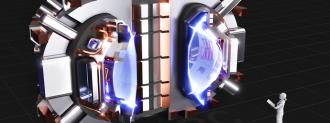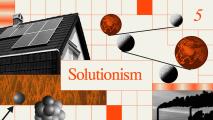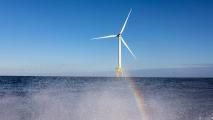This article is an installment of The Future Explored, a weekly guide to world-changing technology. You can get stories like this one straight to your inbox every Thursday morning by subscribing here.
If nuclear fusion was a viable energy source, everything could be electrified. Electricity would be so cheap that projects that seem impossible now could be within our grasp, like commercial space flights, desalinating sea water, or direct air carbon capture.
Now, researchers from MIT say nuclear fusion — the power source of the sun itself — could become a reality by 2035, thanks to a new compact reactor called Sparc.
A New, Compact Fusion Reactor
A team of researchers from MIT released seven peer-reviewed papers this week, presenting an argument that Sparc could produce twice as much power as it consumes.
Some scientists see fusion as the best hope for securing enough clean, reliable energy for the next century.
This wouldn’t be noteworthy for a gas, solar, or traditional nuclear plant (generating power is the whole point!). But nuclear fusion is really hard to sustain. Even though we have had fusion reactors for decades, we don’t use them for electricity because they require more energy to run than they put out.
The reactor is still being developed by MIT and a startup company called Commonwealth Fusion System — but the construction is expected to begin as early as next summer and take 3 to 4 years to complete. There are still many, many obstacles to clear, but if all goes according to plan, we could see electricity powered by nuclear fusion in the next decade, according to the New York Times.
Why This Matters
Global energy consumption is estimated to increase almost 50% by 2050 — and global temperatures are rising with it. Right now, we rely mostly on fossil fuels: 85% of global energy in 2018 came from oil, gas, and coal — compared to just 4% each from renewables and traditional nuclear energy.
Some scientists see fusion as the best hope for securing enough clean, reliable energy for the next century while still cutting carbon emissions.
Bringing the Sun to Earth
Plasma produced from fusion reactors is very hot — hotter than the sun — which is why it has the potential to generate a ton of power if you can get it going reliably.
The challenge here is that creating the plasma requires a ton of energy, and the plasma will destroy nearly anything it touches. We need to design and build a machine that not only produces plasma but effectively contains it, too.
The sun pulls this off by being gigantic — its gravity compresses hydrogen atoms, heating them up enough to fuse, and containing the whole reaction. Fusion reactors on Earth generally do it by using electromagnetic fields to hold the plasma. The problem is these fields require a ton of energy, and if they don’t squeeze the plasma perfectly evenly on all sides, the reaction will fizzle out before it can become self-sustaining.
Although, the MIT researchers are hopeful Sparc will overcome this obstacle by taking advantage of newer electromagnetic technology. This technology is expected to produce a higher magnetic field, making the plasma smaller and easier to hold — allowing it to sustain its own reaction, without pouring in tons of outside energy.
This would allow Sparc to produce fusion comparable to the world’s largest nuclear fusion project (called ITER), despite being much smaller — and, crucially, produce it using less energy than it consumes. Then the extra energy could be used to make electricity.
We Already Have Nuclear Power Plants — This is Different
Our current nuclear power plants use what’s called fission — and more than 10% of the world’s electricity comes from these plants. Fission involves splitting heavy atoms, like uranium, as opposed to fusion, which involves fusing two tiny hydrogen atoms together with enormous force.
Fusion is way more powerful — the same size fusion reactor would produce four times as much as a fission reactor.
Plus, many people worry about the radioactive material fission produces — it can be very dangerous if not properly handled (hey, Chernobyl). Fusion produces no radioactive waste.
Advantages to Fusion
Fusion could bypass challenges posed by fission, fossil fuels, and renewable energy sources.
Fusion would provide constant, steady power whenever we needed it.
First, its fuel is practically limitless. Fusion uses hydrogen isotopes that are either abundant in nature (seawater, for example) or that we can easily make. And we wouldn’t need that much. It’s estimated that a fusion reactor could generate the equivalent of over 36 million pounds of coal with just 11 pounds of hydrogen.
Second, it’s clean — there’s no CO2, air pollution, or radioactive waste.
And finally, it would be (theoretically) reliable. While solar and wind depend on inconsistent sources of power or massive battery backups, fusion would provide constant, steady power whenever we needed it.
Huge Hurdles Remain
These studies are promising, but the reactor is still in the early phases, and many of the design features are still being worked out. Martin Greenwald, deputy director of MIT’s plasma science and fusion center and one of Sparc’s lead researchers, is careful not to over-promise since there is so much work left to do. However, he notes that the math and physics in these studies are a validating first step.
“We haven’t run into anything where we say, ‘oh, this is predicting that we won’t get to where we want,” he told MIT.
“We believe it’s going to work.”
We’d love to hear from you! If you have a comment about this article or if you have a tip for a future Freethink story, please email us at [email protected].






